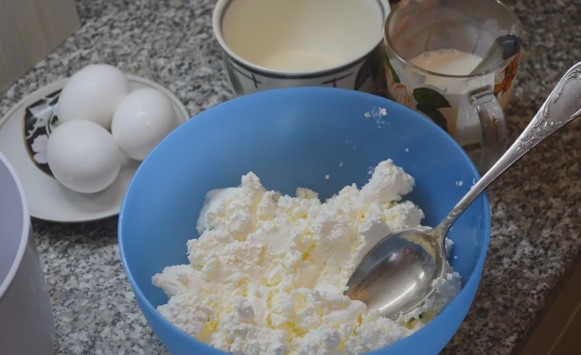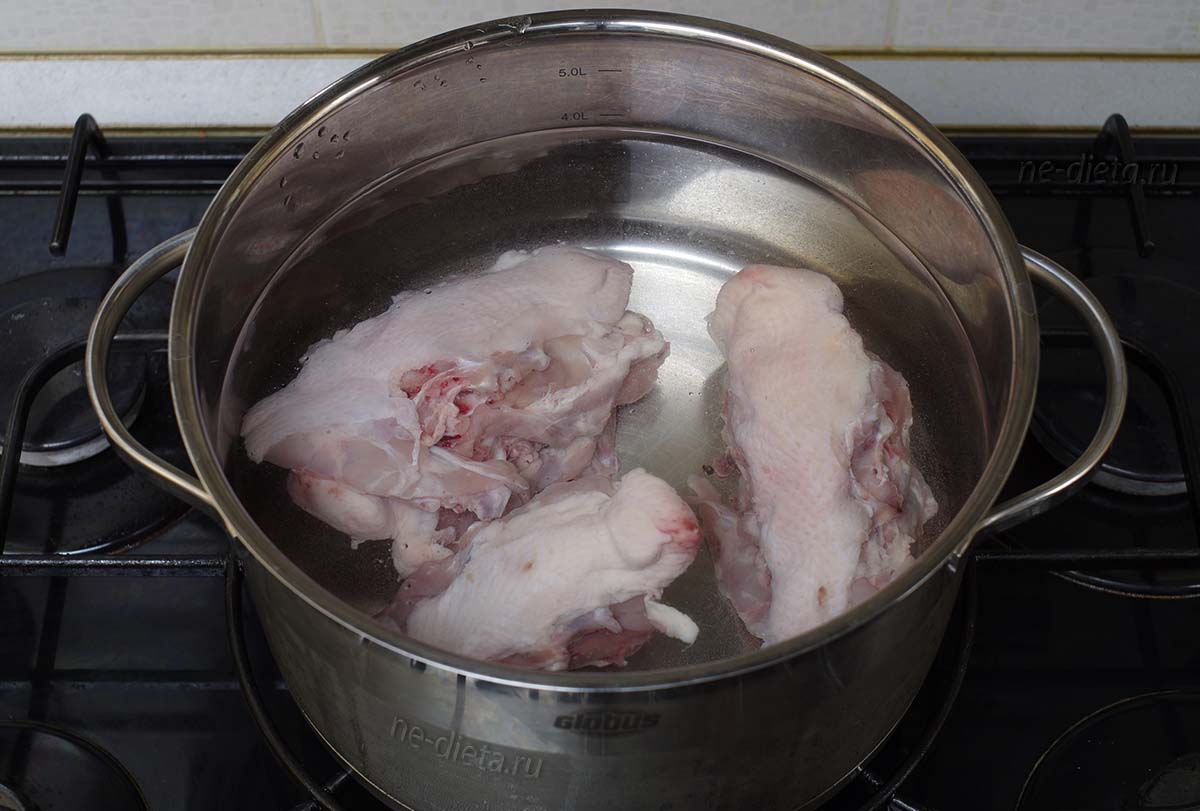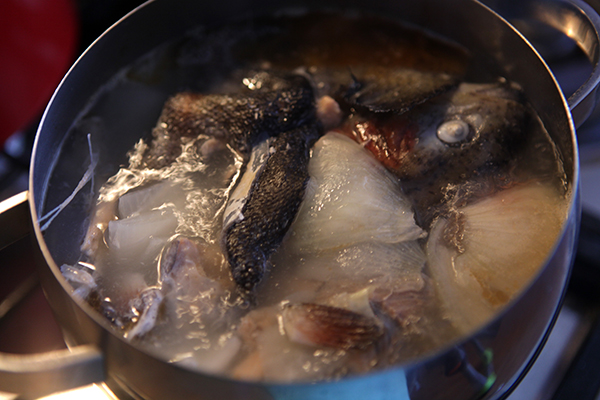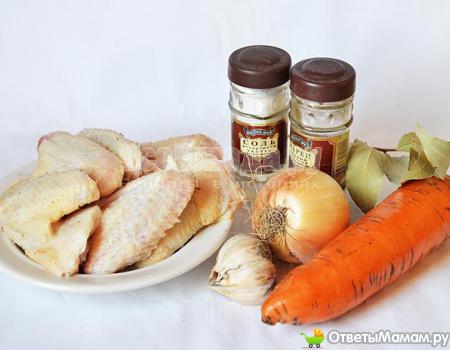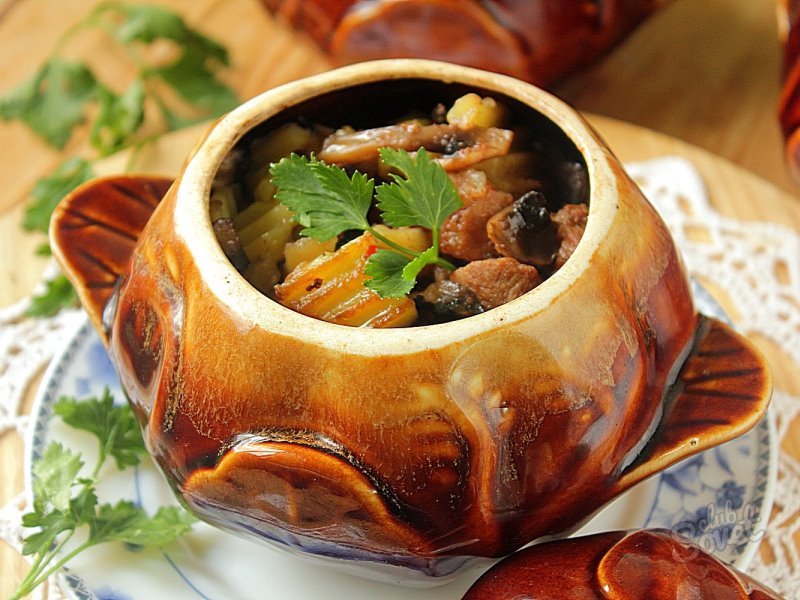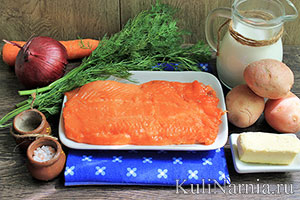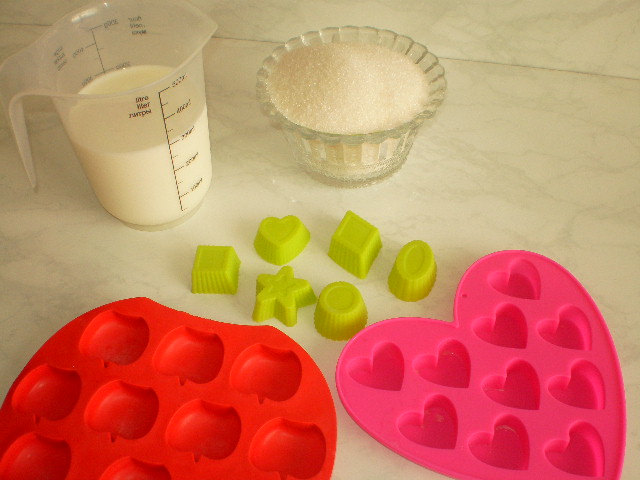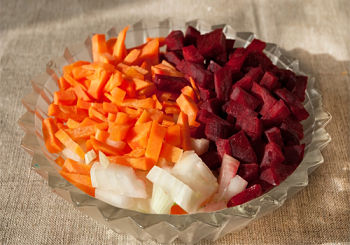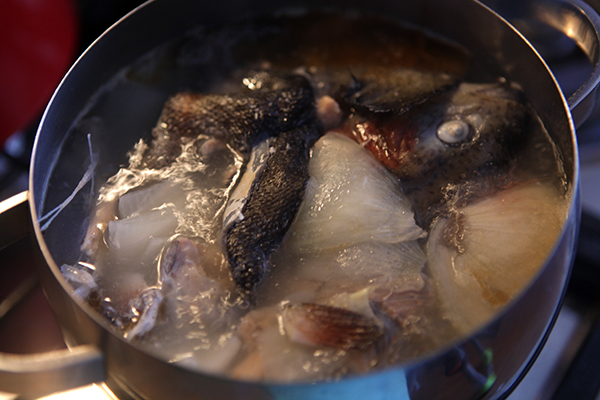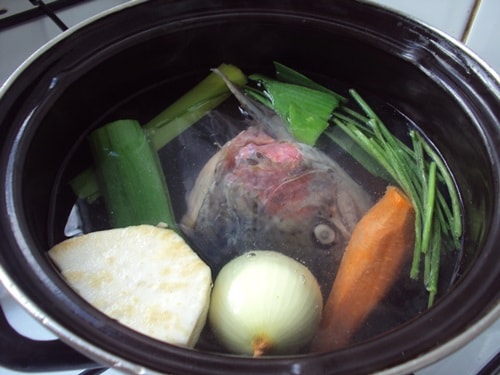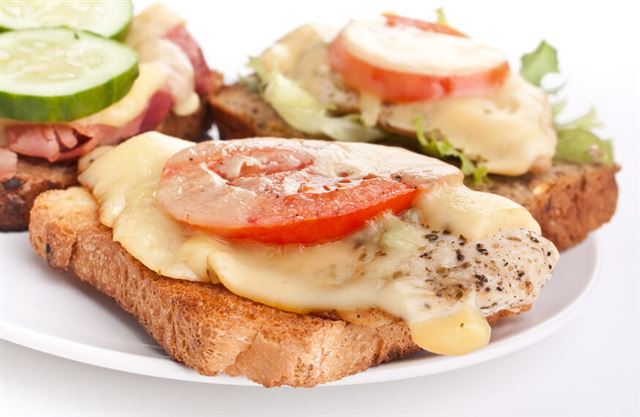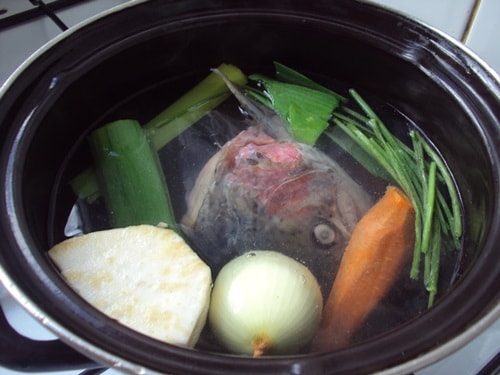Extraction of birch sap. Time, place of collection, storage and medicinal properties of birch sap
Just do not forget that it’s allowed to produce this juice according to the Forestry legislation of Russia, but if you decide to earn money by selling it, you will have to get permission, because from the point of view of legislation, birch sap is currently considered a food forest resources. To do this, you need to rent a piece of forest and get a spring drink on a large scale there. Remember, getting juice in the forest, you can run into a fairly large fine, so it is better to coordinate the production with the forester.
Recall that birch sap can be extracted only two weeks a year: from the moment when the first snowdrops bloom to the appearance of buds on the tree.
To do everything according to the rules, we took with us the Ufa man Pavel Kazakov, who since childhood has been going to the same alley for a natural drink.
- Recently, there have been a lot of poachers, they cut a tree, squeeze juice out of it and leave the wound site open, without covering it up with anything. Such actions spoil trees, ”says Pavel, closing plasticine with holes left by strangers on birches.
Pasha quickly finds the "right" birch. This one really produces a valuable product, most importantly, the Ufa man notes, the birch should be higher than 60 cm, and its diameter should be more than 20 cm.
- Without prejudice to a birch, you can collect about six liters per season from it. You should not drill deeply, almost all the juice is contained in the surface layers, ”the Ufa man comments.
Pavel drills the bark, inserts a tube into the hole, prepares the container - and the juice begins to fill the jar with small drops. Despite the good pressure, a two-liter can will be typed for several hours. We leave her in the forest, and in the evening we will return for her.
By the way, for the juice to flow out of the birch, you need to drill a hole at a depth of five centimeters at an angle of about 20 degrees to the horizontal. The diameter of the hole should be six, eight, 10, 12, or a maximum of 15 millimeters - depending on the outer diameter of the metal or plastic tube inserted into the hole.
- Having collected juice, it is necessary to heal all these wounds. Thoroughly coat with wax, plasticine or hammer with moss, says Pasha.
Paul was convinced of the benefits of birch sap more than once: his father saved him from fatigue and headache.
Harvested crops are not stored for long: no more than two days in the refrigerator. And canning will not help: in this case, as experienced juice collectors note, juice almost completely loses its useful properties.
Juice Composition:
The density of the juice is 1.0007-1.0046 g / ml;
solids content - 0.7-4.6 g / l;
ash content - 0.3-0.7 mg / l;
the total sugar content is 0.5–2.3% (0.43–1.13%).
Among organic substances, essential oils, vitamins, saponins, betulol, and more than 10 organic acids are noted.
Birch sap is a clear fluid flowing from cut or broken birch trunks and branches under the influence of root pressure. The sap flow of birch sap begins in the spring with the first thaws and continues until the buds open.
The exact period of birch sap is difficult to establish, because it depends on weather conditions. For example, if during the March thaw the juice already started to flow and then frosts unexpectedly hit, then it may stop being allocated for some time. However, as a rule, the juice begins to run around mid-March, when the snow melts and the buds swell. To determine the beginning of sap flow, it is enough to go out into the forest and make an injection with a thin awl on a birch the thickness of a hand. If the juice has gone, then a drop of juice will immediately appear at the puncture point, so you can start collecting and harvesting it. They stop collecting juice in the second half of April, when the leaves are already blooming.
The most intensive sap flow on the tree occurs in the bright half of the day, so it is better to start collecting in the morning, at night the juice “falls asleep”. The best time to collect the juice will be the interval between 10.00 and 18.00, when it flows most strongly. The number of holes that are recommended to be made depends on the diameter of the tree, if 20-25 cm - then only one, with a volume of 25-35 cm - two, at 35-40 - three, and if the diameter is more than 40 cm - four holes are perfectly acceptable.
The collection of birch sap should begin at the places most warmed by the sun, where birch wakes up even if there is still snow around. As the forest warms up, one should move deep into the thicket, to where the forest wakes up later than at the southern edge. Usually, 2-3 liters of juice per day are obtained from birch. A large tree can produce about 7 liters of juice per day, and sometimes more. It is preferable to collect sap where cutting is planned, and it is not recommended to take it from young trees.
Due to the fact that the roots of birch go far into the ground, it does not absorb poisons from the surface layer of the soil. Therefore, all the places where birch grows are good for collecting birch sap in the same way, however, collecting juice is still better only in ecologically clean forests, because the tree itself is able to absorb harmful substances and exhaust gases.
The choice of utensils for collecting and storing birch sap must be approached selectively. In the old days, birch sap was collected in special shoes from birch bark, it was believed that in them it better retains its properties. But it is quite possible to collect juice in ordinary glass jars or even in plastic bottles, but remember that chemistry is able to give its specific flavor to the juice, and sometimes it dissolves in it itself.
Juice is usually obtained by incising, notching or drilling a tree bark, the diameter of which is not less than 20 cm, with a well-developed crown. It is better to make a hole or hole in the trunk from the south side of the tree, there is sap flow more active, at a distance of 40-50 cm from the ground, with a downward direction, your movement should be from bottom to top, the depth of the hole is 2-3 cm to penetrate the dead bark, and if the birch is very thick, then even deeper.


An aluminum, plastic groove, a tray of birch bark, or another semicircular device, through which juice flows into a container, is inserted into the slot. Sometimes juice is obtained by cutting small branches and attaching a plastic bag to the cut point. No need to seek to drain all the juice from one tree, it compensates for part of it, but if you bleed the tree completely, it can dry out. It is better to take a liter of juice per day from 5-10 trees than take one liter of 5, dooming it to death.
After the collection of birch sap is over, you need to take care of the tree itself and tightly cover the holes made with wax, cork or moss so that bacteria that can pose a serious threat to the life of the tree do not get into the trunk. After cutting down the birches, juice collection can be organized from stumps.
If you don’t want to drink the juice right away, but want to keep it longer, fill it in a glass jar and refrigerate. So the drink will be less oxidized, that is, deteriorate. However, it is better not to store the juice for longer than 2-3 days, otherwise it will ferment and turn from healing nectar into poison. But if you preserve the juice, then it will stand still for several months.
Several recipes for preserving birch sap for long-term storage.
Fresh birch sap is fermented in glass containers of any volume. Rinsing with hot, preferably boiled, water, they are filled with fresh juice. For every half liter add an incomplete teaspoon of ordinary or glucose sugar, 2-3 raisins, washed in cold boiled water, and if you like - a little lemon zest. The container is closed with a cork or lid and fixed with wire or bandages.
The carbon dioxide pressure during fermentation is created quite high, and so that the glass does not burst, putting more than the specified amount of sugar is not recommended. In a few days you will get a pleasant, sour, highly carbonated drink. To preserve the juice, heat the juice in an enamel bowl to a temperature of 80 degrees. Pour into glass bottles and jars. Fill almost to the top and seal with caps and bottles with corks followed by osmolka. Then soak for 15 to 20 minutes in 85 degrees water for pasteurization.
Cooking kvass from birch sap.
To preserve birch sap, kvass is made from it. Heat to 35 degrees, add 15-20 g of yeast and 3 raisins per 1 liter, lemon zest can be added to taste. After that, the jar or bottle is tightly closed and left for 1-2 weeks. Kvass can be prepared in another way. To 10 liters of birch juice add the juice of 4 lemons, 50 g of yeast, 30 g of honey or sugar, raisins at the rate of 2-3 things per bottle. Bottle and keep 1-2 weeks in a dark cool place. Kvass can be ready in 5 days already, but because it lasts longer, the drink will not go bad, it can be stored for the whole summer.
Another recipe for kvass. A bag of burnt rye bread crusts is lowered on a rope into a barrel of birch sap. After two days, the yeast will pass from the peels to the juice and fermentation will begin. Then a bucket of oak bark is poured into the barrel, as a preservative and tannin, and for the aroma - cherries (berries or leaves) and dill stalks. After two weeks, kvass is ready, it can be stored all winter.
Other methods of conservation and preservation of birch sap.
Our ancestors drank birch sap, fermented in barrels without added sugar - it was a traditional low-alcohol drink at Russian feasts. Birch sap in itself is a pleasant, refreshing and firming drink, but you can add the juice of chokeberry, lingonberry, blueberry or insist on various herbs - thyme, chamomile, caraway seeds, linden flowers, rose hips, in a jar covered with gauze for about 2 weeks .
You can add to it infusions of St. John's wort, mint, lemon balm, pine needles, juice of cherries, apples, currants. Birch sap can be evaporated to thicken to a syrup containing 60% sugar. This syrup has a lemon-white color and a density of honey.
Drink in Belarusian - pour birch juice into a large bottle and put in a dark cool place for 2-3 days. Then add malt from barley or toasted crushed crackers. For 5 liters of birch sap - 30 g. barley malt or crackers. Balm is also prepared from birch sap. A bucket of juice needs 3 kg of sugar, 2 liters of wine and 4 finely chopped lemons. All this needs to be put in a cellar for two months, then bottled and aged for another three weeks.
The healing properties of birch sap.
Birch sap contains organic acids, tannins, minerals, iron, potassium, calcium, glucose, fructose, volatile. The use of birch sap helps break down stones in the bladder and kidneys, purify the blood, strengthen metabolic processes, and remove harmful substances from the body in infectious diseases. It is useful to drink juice for stomach ulcers, diseases of the liver, duodenum, gall bladder, low acidity, radiculitis, rheumatism, arthritis, bronchitis, tuberculosis, scurvy, headache and sexually transmitted diseases.
Birch sap increases the body's resistance to colds, infectious and allergic diseases, has an anthelmintic, diuretic, antitumor effect, it is useful to wipe the skin with birch sap for eczema, acne, to moisturize and cleanse dry skin. On the skin, it is very good to apply the following mask: mix 1 tbsp. l sour cream with 2 tbsp. l birch sap and 1 tsp. honey. You need to hold such a mask for about 15 minutes, rinse with cool water, the skin after it will acquire a beautiful matte shade.
And birch sap is useful to wash your hair with dandruff, to enhance their growth and the appearance of shine and softness (the infusion of birch leaves has the same property). Birch sap is a good remedy for impotence. Birch “tears” have a very good effect on people during menopause, if you drink at least a glass of juice a day, then drowsiness, a feeling of tiredness, irritability and other phenomena associated with menopause disappear.
The systematic intake of birch sap has a restorative and tonic effect. Birch sap is contraindicated for those who are allergic to birch pollen. For medicinal purposes, birch sap should be drunk fresh. It is recommended to take 1 glass 3 times a day for 20-30 minutes before meals for 2-3 weeks.
Our ancestors did not know anything about the composition of birch sap, about all these reserves of potassium and magnesium, sodium and iron, copper, manganese, calcium and fructose, sucrose and glucose, which this spring gift of birches is so rich in.
But they knew very well the time of collecting birch sap and the fact that the birch bark would help with a long-standing cough, with female and male ailments, with diseases of the throat and abdomen, and with long unhealed rotting wounds. They also knew that birch sap would bring back youth, making the skin smooth and radiant, hair strong and thick, and joints again flexible and strong. After reading our article, you can easily determine when birch sap can be collected.

No wonder the month “March” in the Slavic languages \u200b\u200bsounds like “birch”, something between “birch” and “take care”.
The birch is really a tree-preserver for the Slavs, perhaps because of the properties of its juice, which it was customary to collect as soon as the snow begins to melt and the tender birch trees begin to “cry”, taking away all the bitterness and cold with their “tears” winter disappointments.
Dates when you can collect birch sap
Each region has its own dates for birch sap: for the south - from mid-March to early April, for the north - from April to May.
It is necessary to determine when birch sap is collected by melting snow and birch buds: as soon as the buds have swollen and increased in size, it’s time to go from the yard to a “birch hunt”.
It is important not to miss the time when the collection of birch sap begins.
We’ll go into the woods and near the nearest white-trunked (no less than a hand thick!) We shall do a shallow puncture with an awl to the place where the bark converges with the wood. It is easy to identify this place; you have to “listen” to the tree. The bark in its density differs from the body of the tree, so as soon as you feel the difference in the passage of the awl through the wood, stop! Otherwise, it’s possible to inflict a badly healing wound on a birch tree, but you didn’t plan to destroy the tree, you only came to find out when to collect birch sap this year.
If it’s time, then after 5-10 seconds a clear, heavy drop forms on the puncture site, moving up the trunk from the roots of the life-giving tree sap. This will be a signal when you need to collect birch sap.
Now you need to choose the trees that are suitable for collecting and not miss the deadlines, because the juice goes only a week and a half, and you need to stock up to the maximum! As soon as the leaves bloom on the birch tree, the collection of juice should be stopped.
I hope now it’s clear when you need to collect birch sap.
Important! The farther the beloved birch grows from megacities and roads - the better! Trees are capable of absorbing exhaust gases and other harmful waste products of large cities, which they “willingly” share through their juice.
Trees live in the sun, so the juice flows best from 10 a.m. to 17-18 p.m. Keep this in mind when you set up your juice traps.
What birch to choose

In order not to make a mistake with the choice, a few tips from the "experienced":
- Estimate the diameter of the girth of the birch trunk at the chest level of an adult: it should be at least 25-30 cm.
- According to the diameter of the girth, calculate the number of holes that you can make in the tree trunk: from 25-30 cm - only one, from 30-40 cm - 2-3 is acceptable, from 40 cm - 4 can be, and so on.
- If more than one hole is made, then the distance between them should be at least 20 cm.
- Only mature, strong trees with a well-developed root system and a rich crown are suitable for birch hunting. Choose a tree by these parameters, growing slightly at an angle.
- Holes are best made from the south side.
- The tree should not be sick or damaged: your actions can destroy the birch, weakening it.
- If you found only the old birch stump after cutting, check if the “smoking room” is alive. If - yes, then it is quite possible to establish the collection of juice from it.
- You cannot use a young thin tree to collect spring juice!
- Lonely standing on the edge of a birch is also undesirable to "milk".
Advice! If the amount of juice secreted by the birch has ceased to suit you, do not rush to twist new holes, go to another tree that grows in the depths of the forest and begins to wake up - in the depths the forest has just begun to warm up.
How to collect birch sap "the old fashioned way"

The collection of birch sap was traditionally considered a matter of women and children, men treated this matter more like fun, but they shared these trips to the forest with pleasure, helping women to drive thin pegs into the strong trunks, along which weak sweet juice woke up from sleep trees. This method is used today, it is very simple and accessible to everyone.
What do you need
- Birch tuesk, which in our time is easily replaced by a glass jar or plastic packaging.
- The pegs are pointed on both sides, 15-20 cm long, on which the juice will flow.
- A bunch of last year's grass, washed and dried, twisted into a bundle.
- Several ropes for fastening the cans next to the peg.
- A knife or other object that can easily and painlessly open a thick top layer of bark for a tree.
How to collect birch sap
- We select a suitable birch and check it for sap flow;
- We outline an approximate place for the hole (40-50 cm from the roots up);
- If the tree has a thick, old bark, then carefully remove the upper old layer with a knife, taking care not to damage the next young one (a square of about 2x2 cm);
- Using a hand drill or screwdriver, make a hole in the center of the cleaned square to the pulp (the soft inner layer of the tree bark, located directly above the shell). We make the hole at an angle so that the peg inserted into it is located in it with the “nose” down;
- We drive a peg into the resulting hole;
- When birch sap appears, we substitute our jar under the “nose” of the peg;
- We fasten the jar with the ropes captured from the house to the birch trunk;
- We mask our "trap" from curious and other freebie lovers;
- We come to empty our trap twice or thrice a day.
How to Collect Birch Juice Using Herbal Harness

The second way of collecting juice in the “old fashioned way” differs only in that instead of a peg, a grass harness is inserted into the hole, which is easier to make with a screwdriver, which will act as a wick for the life-giving moisture to enter the jar. When they extract birch sap in this way, the ants who have found your “trap” will be extremely happy, and you risk bringing home a can of juice mixed fairly with these forest inhabitants.
Important! From one tree you can collect no more than 1-3 liters, depending on its age and condition! The tree also needs this juice for life! Removing more birch trees from a tree will be difficult to recover.
In short, do not be like greedy vandals, it is better to look for 5-6 more trees in advance, from which you can collect juice without harming the forest.
How to collect birch juice in cans

The youth of our parents came at a time when heels of boiled potatoes and lard wrapped in rags were replaced by tin cans with all sorts of tasty stuff. The same banks were very popular in collecting birch sap!
How to use cans
The lid from the can was cut off completely, rolled up in the previous way, and any suitable container was placed under the groove. If the neck of the container was narrow, then an ordinary household funnel was inserted into it, which significantly increased the amount of collection.
Somewhere at the same time, special devices appeared that looked like a hollow iron or aluminum tube with a “nose” at one end and a pointed edge from the other with different cross-section diameters. The pointed edge, of course, was driven into the tree, and from the "nose" the juice dripped into the jar fixed under it. These "collections" are used to this day, they are really very convenient.
Advice! In order not to cause serious injury to the birch, the diameter of the section of such devices should not exceed 5-6 mm, and after collecting the juice, the “adapt” must be removed from the tree trunk.
Plastic devices for collecting birch sap

With the proliferation of various plastic items in everyday life, collecting juice went faster.
- Firstly, plastic containers have virtually no weight.
- Secondly, it does not fight during rough handling and does not leak.
- Thirdly, plastic containers can be quite large and you don’t have to run to the birch every 2-3 hours.
- Fourthly, as a rule, it has a twisting plastic cover, in which it is easy to make a hole for a tube with draining juice, which eliminates its loss and getting into the container of forest debris or insects.
- Fifth, the tube itself is also made of plastic (cambric with an electric wire, a cocktail tube or a medical dropper).
- Sixth, the device is easy to assemble, can be dismantled without problems and does not deform.
Collecting birch sap with a dropper
- Having found the desired birch, we pierce the bark of a tree with a wide needle of a dropper. Basically, the juice goes between the bark and the wood, so the length of the dropper needle will be quite enough.
- We stick the other end of the dropper into the plastic lid of the can or bottle
- After making sure that the juice has gone, we fix the container between the roots of the birch, and if the bottle is small, then simply wind it with tape to the trunk (again, plastic!).
How to get birch sap with minimal effort

About the same principle "cambric with a cocktail straw" works.
The truth is, you have to work hard and first hammer it into a tree or a thick nail to a depth of 3-5 cm, slope down, make a hole of the desired diameter, and then also pull it out of there. Or use a manual rotary with a drill diameter that matches the diameter of a plastic tube. As a rule, this diameter does not exceed 1 cm.
Important! Remember the permissible distance between the holes (20 cm) and do not arrange "multi-pumping" on the tree, trying to get as many tubes as possible into one bottle, punching a bark 2-3 cm from each other!
In our “advanced” times, instead of a nail and a hand rot, a cordless hand drill is successfully used, which makes the process of collecting birch sap much more prosaic and easily accessible.
All of the above methods make it clear how to properly obtain birch sap without causing much harm to the birch itself.
The method that gives the largest possible amount of birch sap

There is such a method, but it is unacceptable for a normal person, because this method makes the tree hurt for a long time, and may even destroy it.
With this method, an ordinary ax is used, which makes a serif on the birch trunk. The poor white-barrel girlfriend literally runs out of her tears, and they are often simply not able to restore such an amount of lost juice.
People using this method liken themselves to a pig from Krylov's fable “Pig under the Oak”, where the pig undermines the roots of the oak tree in search of acorns, completely not caring that the oak tree on which these same acorns grow, perishes.
Advice! It is not necessary to approach nature from the position of a predator, this distinguishes us - people - from animals!
The options for collecting birch trees proposed above (except for the "clumsy", of course) are the safest for trees, because they do not cause serious damage to them. By these methods, you can collect as much juice from several birch trees as you wish, without seriously harming the birch tree itself or the forest as a whole. Above, we described in detail how to extract birch sap without causing severe harm to the tree.
Basic rules for collecting birch sap

It’s not enough to do serious harm, you also need to thank the birch to heal the wound that you inflicted on her anyway. Make it easy:
If you used pegs “in the old fashioned way”, at the end of the process, they must be broken off and cleaned “flush”, covering the surface with garden varieties or resin of conifers.
After your “birch hunt”, in any case, wounds remain on the tree trunk. It is necessary to carefully remove all your devices and drive a wooden chop or densely packed moss into this “hole”.
Advice! Chop can be any knot or twig picked up in the forest, the main thing is that it is not rotten and peeled of bark.
And be sure to gloss over! No garden var? Did not find a Christmas tree in the forest? Apply at least oil paint!
Of course, a birch can grow a small place of damage without your help, but with you it will do it faster! The birch sap quickly permeates the chopped cork itself, fills the remaining space in the “hole” and cheerfully runs up the trunk and branches, and the tree itself will easily tighten the wound with new wood.
If you did everything correctly, then the tree will quickly tighten the place of your impact so that, having come to the same tree next year, you can’t even find the place of the previous introduction.
You are welcome for the next birch batch!
Birch sap has been harvested since early March; its strongest course is observed in April. This is due to the fact that when snow melts, a large amount of water enters the root of the tree. In this regard, large starch reserves accumulated in the roots and trunk turn into sugar, which dissolves in water. The movement of the juice, which is also called the "cry of birch," begins about a month before the first leaves bloom. So those who want to try a tasty and healthy drink have about 15-20 days in order to collect it.
What is useful birch sap
Birch sap has a positive effect on the whole body, with its help not only preventive measures are possible, but also a full-fledged treatment of diseases:
- urolithiasis;
- stomach ulcers;
- bronchitis and cough;
- rheumatism, arthritis and gout.
The drink will help in the fight against infections and harmful microorganisms. It is actively used to combat skin diseases and inflammatory processes of various origins.
Juice increases the overall tone, removes the feeling of fatigue, drowsiness and irritability. In addition, it performs a regenerative function and stimulates the normal course of metabolism.
Rules for the use of birch sap
After collecting birch sap, it is necessary to bottle it, adding 2 tsp to each. Sahara. Store in a dark and cold room.
For medicinal purposes, only fresh juice is used, it can be stored in the refrigerator for no more than 2 days.
Maple juice
Maple begins to bloom quite early, and the juice gives about three weeks before flowering, already in early March. It appears much earlier than birch, and there is not much time to collect. It is worth noting that the juice stands out more abundantly on a sunny day, and in the freezing completely stops flowing.
Useful qualities of maple juice
The drink contains a large number of elements that are very important to the human body. These are vitamins, minerals and organic acids. Maple juice is famous for its bactericidal properties, so it can be used as an antiseptic for wounds. It is useful for vitamin deficiency, asthenia, as a prophylactic for colds, especially in the season of acute respiratory viral infections.
What to look for when collecting and consuming tree sap
The quality and useful properties of juices directly depend on the location of the tree. Therefore, do not collect them in contaminated areas, for example, close to industrial enterprises, roads and railways.
Those who are limited in sugar intake should remember that they are present in the composition of juices. Therefore, the use of juice should be discussed with your doctor.
It is worth noting that conifers also give juice, which is called "resin". It has a different consistency, because it freezes already on the bark of a tree, but has excellent medicinal properties. As a rule, they are aimed at strengthening immunity, increasing the general condition of the body and the fight against spring vitamin deficiencies and asthenia.
Tip 2: How birch sap is useful for the body, how to collect and store it
Earlier in the people, birch sap was considered almost a panacea for all diseases. It was believed that during the season you need to drink about 10 liters of this valuable drink in order to stay healthy. Given such a large amount, it is important to know how to properly collect birch sap, whether it can be stored.
What is beneficial birch sap for the body
Birch sap contains many vitamins and minerals. It is rich in calcium, magnesium, copper, potassium, phosphorus, zinc, sodium, silicon - and this is only part of the list. After winter, this juice becomes very important for restoring strength and raising immunity. Drinking a glass of juice daily for thirty days, you protect yourself from viral and bacterial infections, and also get a boost of energy - nothing can spoil the spring mood.
Few people know that birch sap is able to skin: normalize the secretion of sebum, reduce age spots and even treat acne. And if you wipe your skin daily with this drink, it will always have a fresh and well-groomed appearance.
The benefits of birch sap for pregnant women are also undeniable. These are not only the vitamins listed above, but also a large amount of glucose and fructose in the composition of the drink. Birch sap helps those who suffer from toxicosis - it quickly restores the water balance, compensates for the deficiency of vitamins and minerals necessary for the development of the fetus and the health of the expectant mother.
How and when to collect birch sap
The collection of birch sap begins in early spring (from mid-March to mid-April) - the kidneys should swell, but not begin to bloom. The best time to collect: the interval between 12:00 and 18:00 hours.
It is better to choose an older tree, with a trunk thickness of 20 cm or more. Up to 7 liters of valuable product can be obtained from a large tree per day, much less from a young birch tree. In addition, the young tree is easy to damage and ruin, and its juice is not so tasty.
Holes for the flow of juice must be done with a drill or nail (about 5-10 mm), so the cuts on the birch will heal faster. The fewer these holes, the better. Collect no more than a liter of juice from one tree so that it can heal its “wounds” faster.
Having carefully made a hole, attach a semicircular device to the birch bark with a thick wire, through which juice can drain into a bag, bottle or other cooked vessel.
At the end of the juice collection, the hole must be covered up or plugged with clay or moss.
How to store birch sap at home
Fresh juice can be stored in the refrigerator for about 2 days, but it is better to drink it immediately after collection. If desired, the juice can be frozen. If you want to keep it for the whole year, conservation will be required: for each liter of birch sap, 70-100 g of sugar and 3-6 g of citric acid are taken. All ingredients are mixed in a pan, heated (without boiling). After the sugar has dissolved, the hot juice is poured into sterilized jars.
Just imagine how pleasant it will be to feel the taste of spring in deep winter, savoring a mug of precious birch drink!
“Birch sap is a delicate drink with light sweet notes. In general, it’s rather strange to paint the charm of a “birch” taste (rather weak and unexpressed), because in fact it is pure natural water enriched with minerals of the tree - and this is its main charm. Plus, the special meaning of birch as a symbol of Russia.
Maxim Rybakov, Chef of the GK Pushkarskaya Sloboda, Suzdal

Arsenal for collecting birch sap from Maxim Rybakov, chef of the GK Pushkarskaya Sloboda and its birch kvass
The best option is to drink birch juice or use it immediately for cooking. If you want to stretch the pleasure, to the detriment of the benefits of a natural drink - freeze it. To do this, bottle it and put it in the refrigerator. But, fresh juice is fresh juice.
I make of it kvass. To do this, mix in a saucepan 1 liter of juice and 50 g of rye sourdough and leave for 5 hours at room temperature, covering the container with foil. Then I filter the liquid, pour it into bottles, which I close with a tight lid and put it in the cold (plus 5-7 ° C) for 48 hours. Kvass is ready. Most of all, it looks like white kvass with its characteristic sourness and slightly “fermented” note to taste. Such a drink is stored for a week, but is drunk much faster. ”
Nikita Poderyagin, Chef of Scandinavian cuisine restaurant Bjorn:
“There are three factors that you need to pay attention to when collecting birch sap. 1. Do not get sap from Moscow birches, and even trees near Moscow are not very suitable for this. Go away - to the region, at least 30-40 km from the city. 2. Do not use young and old trees to collect. Your goal is a birch with a diameter of 3-4 male palms. The hole for extracting juice should not be deeper than 5 cm. After collecting the juice, be sure to stick / cover the hole with wax or moss, even just stick a birch branch in it, then it will certainly take root. 3. Collect birch sap until the buds are full. This is the time of the “rut”: if you approach the birch and lean your ear against the tree, you will hear the noise of the coming juice.

Nikita Poderyagin, chef at Bjorn restaurant and serving birch juice there
There is enough sugar in birch juice to prepare low-alcohol drinks from it, for example, sparkling wine - it ferments well. The recipe for such derivative drinks can be found in old cookbooks.
Freshly picked juice is the most healthy. I consider it to be real living water. All that needs to be done after collection is to strain the drink through cheesecloth and use immediately. For me, frozen birch sap is just cosmetic ice.
At the restaurant, during the season we serve the drink clean or I use it as one of the ingredients for making the sauce. Some chefs make syrup from it, but this is too expensive: from 100-120 liters of juice, only 1 liter of syrup is obtained. And all the charm of freshness disappears at the same time. ”

